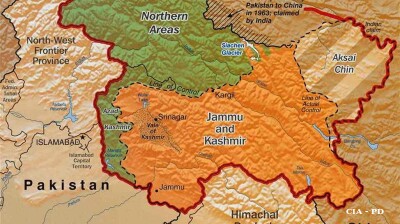With the inauguration of President Lee Jae-myung in earlyJune 2025, South Korea has pivoted sharply away from the confrontational posture of its predecessor towards a strategy that blends firm deterrence with a more hopeful take on diplomacy with the North.
How Pyongyang is viewing this shift, and what it may mean for the future of inter-Korean relations, remains both crucial but uncertain.
From Seoul’s vantage, President Lee seeks a balanced approach. In his inauguration, he pledged to retain strong deterrence backed by the US-ROK alliance while simultaneously reopening communication channels with North Korea to “establish peace on the Korean Peninsula through dialogue and cooperation” according to PBS News. He also vowed to heal national division and pursue “peace, no matter how costly” DW reported.
Since then, Seoul has taken several concrete steps to de-escalate tensions. On August 15, 2025, President Lee announced plans to restore the 2018 Comprehensive Military Agreement (CMA), which limits military activity along the border-suspending drills, removing loudspeakers and leafleting, and reinstalling communication protocols intended to reduce the risk of accidental clashes as was widely reported in both local and international media.
At the same time Lee emphasised that South Korea does not seek to absorb the North, and stressed the importance of respectful dialogue and denuclearisation.
However, North Korea’s response has been chilly, to say the least. Kim Yo-jong, the influential sister of Kim Jong-un, dismissed Seoul’s overtures as a "pipe dream," accusing the South of deceit and denying any intention to dismantle its propaganda infrastructure according to The Times. She rejected dialogue outright and appeared unmoved by Seoul’s confidence-building measures, even as joint US-South Korea drills continued to rankle Pyongyang.
Such a response is hardly surprising.
Since early 2024, North Korea has categorically rejected the notion of reunification, amended its constitution to list South Korea as a “hostile state,” dismantled co-operation bodies, and even destroyed the symbolic Arch of Reunification sources say.
Then, in early 2025, Pyongyang entered yet another period of military provocations - test-firing missiles immediately after joint US-South Korea military exercises. This is not unusual, and for the most part is little more than bluster on the part of the ruling Kim family, but even as North Korea expressed its displeasure at Seoul-Washington exercises, attention turned to what lies ahead.
For now, there are perhaps three, maybe four realistic scenarios that will play out during President Lee’s tenure at the helm of the South Korean government.
Stalemate interspersed by periods of sporadic tension
Given its current posture, North Korea may continue rebuffing South Korea’s overtures while pressing ahead with its military developments. Renewed joint drills by Seoul and Washington are likely to provoke more hostile rhetoric or sporadic provocations from the North - perpetuating a cycle of tension rather than dialogue.
Gradual confidence-building
If South Korea maintains a consistent, incremental approach by restoring military accords, refraining from overtly provocative acts, and coupling deterrence with sustained outreach, Pyongyang may eventually respond, albeit hesitantly.
This could pave the way for limited, transactional dialogues, humanitarian exchanges or freeze-for-freeze arrangements, to reduce tensions without broader concessions.
Diplomatic leverage through external mediation
Should international players such as the United States, China or Russia, step in as brokers, they might persuade Pyongyang to engage. Flattery goes a long way north of the demilitarised zone so President Lee’s emphasis on trilateral cooperation with Washington and Tokyo may help in framing such diplomacy as part of a wider regional security architecture, PBS suggests.
Diplomatic breakthrough – possible but don’t bet on it
While a comprehensive restoration of inter-Korean engagement - from economic projects to reunification talks - is a long-term aspiration, it remains improbable in the near term. Persistent distrust, differing ideologies, and North Korea’s interest in preserving its regime security all pose significant barriers. Kim Yo-jong’s ‘pipe dream’ comments may be better applied to this possible outcome with President Lee in office, at least for now.
As such, North Korea’s current reaction to President Lee’s conciliatory overtures underscores its entrenched hostility and deep scepticism toward Seoul’s overtures. President Lee’s restoration of the 2018 military pact and his repeated assurances of respect for the North’s regime reflect a sincere attempt to defuse tensions but for now Pyongyang’s continued rejection suggests that progress will require both patience and perseverance.
Looking beyond 2025, inter-Korean relations will likely evolve within a framework of cautious, conditional engagement, punctuated by periods of confrontation; essentially mirroring the progress - if it can be called that - of the last few years.
Any real breakthroughs will hinge on trust, mutual recognition, and perhaps the intervention of external actors. And with US President Donald Trump trying to secure his legacy with a Nobel Peace Prize of late, such external pressure may happen sooner, rather than later.
Features

BEYOND THE BOSPORUS: Prosecutors make move on “fictitious export schemes” of Istanbul Gold Refinery
Observers point to intra-regime gangs seizing each other’s wealth, remember Erdogan’s “Hello Fatih” phone calls and ponder whether wanted man Turgay Ciner is in London.

Taliban visit to India upsets Pakistan, signals New Delhi's changing Afghan posture
Coinciding with the visit, Pakistan conducted military operations inside Afghanistan, followed by airstrikes on multiple border towns. Retaliation against Pakistan's police training facilities and border outposts followed.

Pakistan’s India-shaped chip on the shoulder, and why a peaceful coexistence is as elusive as ever
Pakistan must first redefine how it sees India - not solely as a threat to be contained but as a neighbour with whom coexistence is unavoidable. That psychological leap has eluded generations of Pakistani leaders.

Trump shocked by China’s move on rare earths, threatens more 100% tariffs
"Some very strange things are happening in China!" Trump wrote in a post on his Truth Social account on October 10, adding "They are becoming very hostile."




_1_1758603618.jpg)